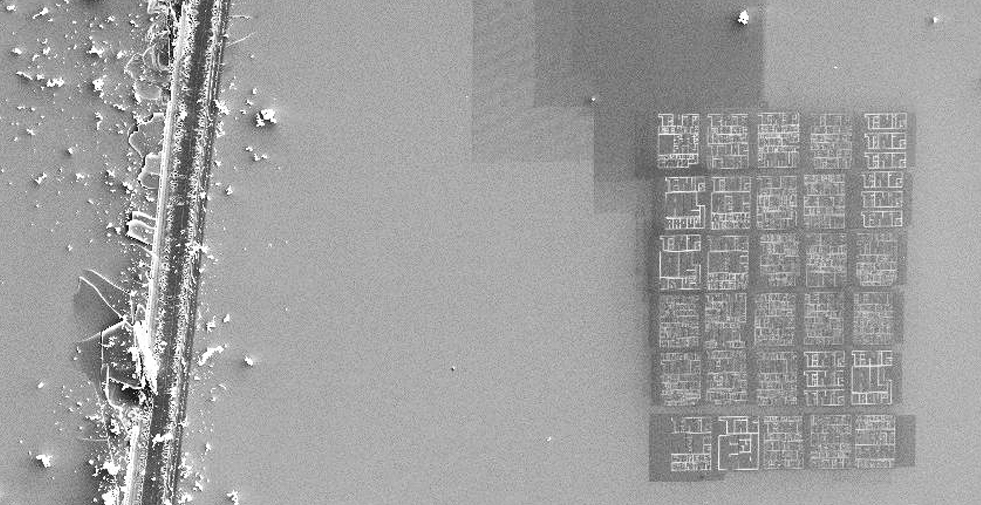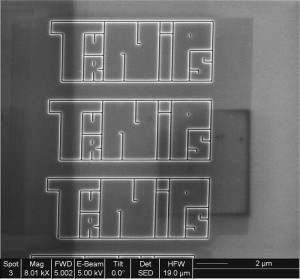 Have you ever turned a buckskin whincher, or cradled a chicken-egg recursion device in the palm of your hand? Or caught a quantum of anti-matter and held it by the tail?
Have you ever turned a buckskin whincher, or cradled a chicken-egg recursion device in the palm of your hand? Or caught a quantum of anti-matter and held it by the tail?
They’re all quite possible, it turns out, though you need Big Science for one, and a quite a lot of art for the other two. Come to think of it, my brother might be the only person ever to have done all three.
Mike is a physicist, see, so trapping anti-matter is just part of his day job. Buckskin whinching though? That’s where his friend Rob Chaplin comes in. Rob’s day job, at least part of it, is inventing things that don’t exist, but probably should. The original buckskin whincher appeared in three stories from Carl Sandburg’s 1922 book, Rootabaga Stories. Only it’s never pictured or described, so Rob reverse engineered it from first principles.* Because that’s the way he thinks.
I don’t know how Mike and Rob met, and they don’t collaborate exactly. But they’re both builders, and they both spend a lot of time thinking about abstractions and ephemeralities, and then making them tangible. For Mike, the playground is low-temperature physics and magnetic resonance; he makes ghostly things, like antimatter, tangible by figuring out ways to see, or catch, or measure or harness them. For Rob, it’s conceptual art, book design and library hacking. (I’m personally a fan of Matchbook: A Fireside Fable, a matchbook-book, complete with short tale, copyright statement and ISBN.)
Their work couldn’t be more different, really. But their minds? I’m not so sure.
There’s something happening in the thin slice of overlap between making the ephemeral tangible (good science) and making the abstract concrete (good art) that I’m not quite smart enough to capture (bad writing). But it sure seems to keep the two of them amused.
And that’s where Teeny Ted from Turnip Town comes in. In 2007, Mike introduced Rob to a colleague, who happened to have an ion beam lithography rig — you know, the nanoscale etchers people use to carve integrated circuits out of crystalline silica. Only Rob didn’t want to make a circuit. He wanted to make a book: the smallest book in the world.
 He chose a tricky font, a short tale of trial and triumph written by his brother, and chipped away at a sheet of silicon with an ion beam 42 nanometers across. He laid out the whole book on 30 plates, measuring a total of just 70 by 100 microns. Each page, in other words, is about the size of a red blood cell. And if you want to read it all, you’ll have to ditch your Kindle for a scanning electron microscope.
He chose a tricky font, a short tale of trial and triumph written by his brother, and chipped away at a sheet of silicon with an ion beam 42 nanometers across. He laid out the whole book on 30 plates, measuring a total of just 70 by 100 microns. Each page, in other words, is about the size of a red blood cell. And if you want to read it all, you’ll have to ditch your Kindle for a scanning electron microscope.
Now, Rob wants to take Teeny Ted large print, which is to say, normal book size. And you’re crazy if you don’t at least take a look at his Kickstarter page — how are you ever going to own your own solid sterling silver Brussels sprout if you don’t make a donation?
So why make the world’s smallest book, only to blow it back up to more standard dimensions? “The thing about nanoscale is that its smallness approaches the cosmic,” Rob wrote in a late-night email. “It’s mind-blowing to contemplate the production of something so small that light particles are too fat for perception.” Bringing it up to human scale helps make the comprehension of size possible, he says, though he resists the idea that the original is miniature. Rather, it’s just “actual size.”
It’s all a bit of a puzzle to me, honestly. And maybe that’s the point.
Says the physicist of the artist, “Rob is a person who is bursting with questions (is not afraid to ask those questions), and who has some very interesting ways of looking at the world. I like the challenge of trying to answer those questions, and enjoy seeing what he ends up creating or interpreting from those answers.”
And the artist of the physicist: “Mike has a way of thinking about things which I love. I realize that my questions are often really childlike. Mike always thoughtfully considers my questions and answers them with respect and patience.” (That’s how he cracked puzzles as a kid, too, by the way–and won every board game.)
Could it really be as simple though as one domain raising questions, and the other answering them? Surely not — the pursuit of science results in many new questions for every one it answers, and if the painting of a northern Saskatchewan forest at night on my living room wall isn’t an answer to the question of how to handle homesickness, I don’t know what is.
For Rob, the overlap goes deeper than just puzzles though: “There is a relationship between art and science, and at the highest level both manifest an understanding of creation.”
I think I buy that, too. Having more than one way to understand creation is certainly a fine break for humanity. After all, as Rob says about buckskin whinchers, “they bring weird luck, and different whinchers have different powers.”
Sort of like artists and physicists do.
Images Top: scanning electron micrograph of the “actual size” Teeny Ted from Turnip Town. Middle: Detail of one page: “Turnips, Turnips, Turnips”
“Could it really be as simple though as one domain raising questions, and the other answering them?”
Yes! That explains science fiction, right? It a way, it’s the road map.